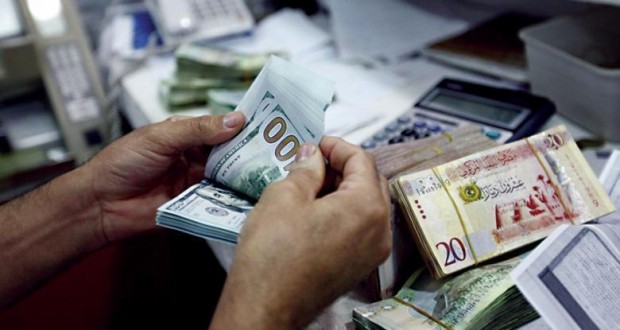South American Lithium is critical to the EU’s low-carbon future
International
Published on 2024 June 17, Monday Back to articles
SQM Processing plant, Atacama Desert, Chile 2017. Source: Edward Burtinsky, 2017
The European Commission’s Critical Raw Material Act (CRMA) came into effect on 23 May 2024. It highlighted Ursula von der Leyden’s ambitions for a more geopolitical commission before last week’s European parliamentary elections. The act signifies the importance of the supply of critical raw materials for the EU’s future in a green and digitalised economy.
The CRMA is a strategic manoeuvre by the Commission to enhance the supply resilience in response to increasing global demand and complex geopolitical strategies. It aims to address these risks by diversifying sources and increasing internal production and recycling capabilities, with targets for 2030 including:
- Extracting 10% of the EU’s CRM needs.
- Processing 40%.
- Recycling 25%.
- Limiting dependency on a single third-country supplier to 65%.
One area where the CRMA is already having an impact is in the lithium sector. As one of the lightest metals in the periodic table, lithium is the natural candidate for high energy density batteries because of highly reactive electrochemical characteristics. The lithium industry’s ability to ramp up supply has allowed the Electric Vehicle (EV) market to outpace industry expectations. In 2023, the EV industry consolidated its position as the largest lithium consuming segment with a 35% year-on-year increase. It is projected that it will account for about 90% of future lithium demand growth between now and 2050 as major markets progress and adoption increases in emerging economies.
Lithium is a strategic rather than a scarce resource. The increasing importance of lithium-ion batteries has transformed the renewable energy sector. It has become a totemic material, part of a much larger geopolitical transformation with China emerging as a global force. As the main lithium manufacturing hub, China is highly influential and determines the global spot price. The EU’s failure to anticipate and address China’s monopoly in lithium processing and global market shares has resulted in a lag and has intensified power conflicts. Lithium geopolitics will shape the EU’s ability to enhance its domestic production capabilities and create a more balanced trade environment.
The EU is therefore seeking deeper collaboration with Latin America to satisfy its booming lithium demand. Brussels has indicated its desire to become the ‘partner of choice’ in a series of recent bilateral trade negotiations. It is estimated that the ‘Lithium Triangle’ in the salt flats of Bolivia, Chile, and Argentina hold 56% of the world reserves but only a third of the global production. Although each country faces the same exogenous pressures and opportunities, their potential to capture the market vary depending on the governing regimes and associated national policies.
Chile
Despite having the fewest resources, Chile is the region’s leading lithium producer. Its decades of mining experience engender a significantly higher productive capacity than its competitors in the Lithium Triangle. However, the mining sector’s developed nature is damaging to foreign investments in new projects. Chile’s established legal framework is significantly tougher than that of Argentina and the limited resources that remain to be extracted imply that the break-even price is four times greater than that of the region’s other countries.
Argentina
Argentina is currently the world’s fourth largest producer and the fastest growing country in the sector. Its’ reserves are only exceeded by Bolivia and it has become an attractive destination for foreign investment. Based on announced projects, Argentina attracts over 80% of the region’s future capital investments for lithium mining. Under President Milei’s ultra-liberal leadership, the government has used a permissive legal and regulatory mining structure to counteract economic stagnation and reignite economic growth. Despite being an intriguing opportunity for investors, however, volatility remains a concern because of its economic and political instability. Nonetheless, there are opportunities for European investors, as its high dependence and close ties to Chinese industries could classify it as a foreign entity of concern, which would prevent access under the US Inflation Reduction Act.
Bolivia
With the world’s largest reserves, Bolivia has the region’s greatest growth potential. President Luis Arce’s administration has clear aspirations to recover from its fiscal issues and slow growth by becoming the ‘world capital of lithium.’ Having recently signed mining contracts with Russian and Chinese consortia, Bolivia launched an international tender for mining contracts in a series of Lithium Industry Days in Brussels. Despite these encouraging signals its path to success is dependent on three critical factors:
- achieving manufacturing standards
- negotiating profit-sharing and
- licensing agreements.
Bolivia’s lithium is managed by the state-owned Yacimientos de litio Bolivianos (YBL) which has made significant investments with China’s CATL consortium in the hope of achieving Direct Lithium Extraction (DLE). This is achieved by separating lithium from the brine underneath the salt pans and refining it. This is promoted by DLE companies as a more efficient and cleaner method of mining because it requires 70%-90% less water per ton of lithium extracted.
The Lithium Market
In late 2023 the lithium market appeared volatile, with spot prices dropping by 75% after two years of rapid growth. Despite this demand remained robust and grew by around 30% last year. This price fall was not as dramatic as it appears. High-purity lithium salts are more of a specialty chemical than a fungible commodity. Lithium is not like gold or crude oil. There is no meaningful spot price because the realised price differs by application, buyer, types of impurity, and volume. Therefore, almost all high-purity salts are sold via long-term contracts rather than a market price.
The primary concerns for the global market are:
- The significant gap between prospective supply and demand.
- Announced projects shows a further geographical concentration of mining operations despite the European companies’ increasing role in asset ownership.
- Demand for EVs has slowed and lithium-ion battery and EV makers are currently destocking instead of placing new orders as a result of European protectionist measures.
These price drops are a double-edged sword: a boon for clean energy deployment but a bane for mining investment and diversification. The subdued spot demand is weighing on sentiment and reducing prices. Fears over another crash and current capital losses may stymie efforts to increase lithium production for years.
Ultimately, these changes in the market may seem unremarkable. Commodities fluctuate all the time. What separates lithium, and what is driving the scarcity narrative, is the rapid medium-term demand. This revolves around intense geopolitical competition between the EU, US, and China in the limited number of low-cost producing countries. In Brussels, China’s near-monopolistic control over the lithium-ion battery chain is fuelling rising demand for resource securitisation. The EU’s capacity to implement its low-carbon industrial policy is dependent on addressing these increasingly acute supply concerns. The CRMA is a tangible response to this growing concern. In the lithium industry, its success depends on the government regimes and accompanying national policies in the Lithium Triangle.
Niall Beamish
Kings College London



